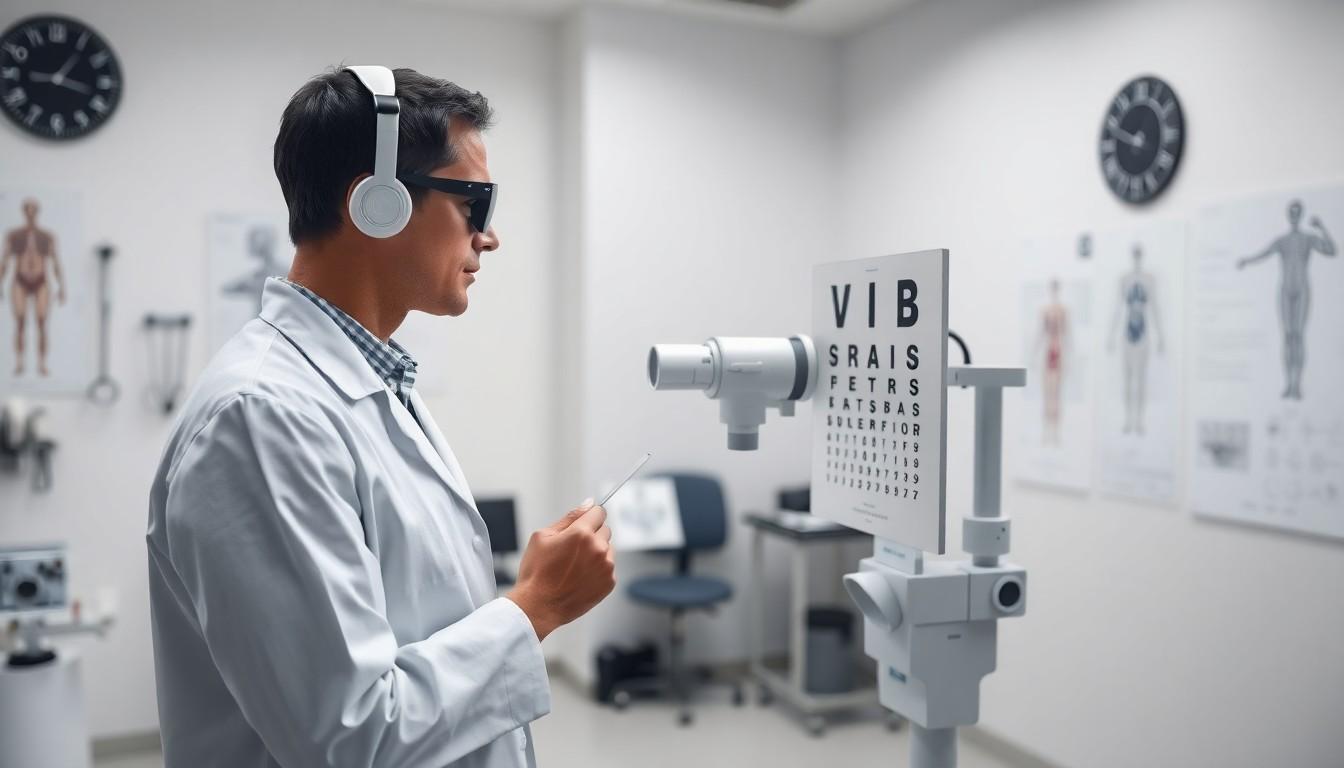Phone:
(701)814-6992
Physical address:
6296 Donnelly Plaza
Ratkeville, Bahamas.

Homorzopia disease might sound like a character from a sci-fi movie, but it’s a real condition that can impact lives. Imagine trying to navigate the world with a faulty GPS—frustrating, right? Testing for this quirky ailment is crucial, and understanding the process can make it a lot less daunting.
Homorzopia disease significantly impacts daily life and well-being. Patients experience challenges similar to navigating with an unreliable GPS system. This condition involves visual processing difficulties, affecting clarity and depth perception.
Symptoms often include distorted vision and spatial awareness issues. Understanding these symptoms aids in recognizing the need for testing. Testing plays a critical role in diagnosing homorzopia disease.
Several methods are employed to evaluate visual function thoroughly. Comprehensive eye examinations assess visual acuity and perception. Standardized vision tests measure both accuracy and response to visual stimuli. Advanced imaging techniques, like optical coherence tomography, provide detailed images of the retina.
Additionally, neuropsychological assessments evaluate cognitive processing related to vision. These tests help identify the connection between visual symptoms and potential neurological factors. Early identification can lead to more effective management strategies.
Consulting a healthcare professional is essential for anyone suspecting homorzopia disease. They provide valuable insights into symptoms and recommend appropriate testing. Access to specialized care often enhances outcomes and improves quality of life.
Testing for homorzopia disease follows a structured approach, ensuring accurate diagnosis. The comprehensive evaluation considers various factors influencing visual perception. Engaging with multidisciplinary teams fosters a deeper understanding of individual needs and appropriate interventions.
Ongoing research explores effective treatment options for those diagnosed. Current investigations focus on therapy techniques and assistive technologies. Testing remains a fundamental aspect of addressing homorzopia disease long-term.

Testing for Homorzopia disease plays a crucial role in managing this condition effectively. Early diagnosis leads to improved outcomes and better quality of life for affected individuals.
Early detection of Homorzopia disease offers significant advantages. Identifying the condition promptly enables healthcare professionals to implement tailored management strategies. Effective treatment can improve visual processing, enhancing daily functioning. Patients may experience a reduction in symptoms such as distorted vision. Immediate support leads to better coping mechanisms and therapy options. Comprehensive testing ensures timely intervention, which can prevent further complications. Overall, early detection fosters a proactive approach to managing Homorzopia disease.
Long-term implications of untested Homorzopia disease can be severe. Without proper diagnosis, patients may struggle with ongoing visual and spatial challenges. Persistent issues can affect daily activities, such as driving and employment. Additionally, individuals may face emotional consequences, including anxiety and frustration. Testing facilitates access to appropriate therapies, promoting better coping strategies. Addressing Homorzopia disease involves ongoing support and rehabilitation, ensuring patients lead fulfilling lives. Ultimately, thorough testing supports long-term health and well-being, highlighting its critical role in disease management.
Testing for Homorzopia disease involves various techniques that accurately assess visual function and processing. These methods ensure timely diagnosis and tailored treatment plans for affected individuals.
Genetic testing serves as a primary approach for identifying Homorzopia disease. It screens for specific gene mutations associated with the condition. Individuals with a family history of Homorzopia may benefit from genetic counseling before testing. Analysis typically focuses on mutations in genes linked to visual processing disorders. Results can guide management strategies and inform family planning decisions.
Blood tests play a significant role in diagnosing Homorzopia disease. They evaluate biomarkers that indicate potential abnormalities in visual function. These tests measure specific proteins or metabolites related to the disease. Abnormal results may suggest further evaluation is necessary for a comprehensive diagnosis. Monitoring blood markers helps track disease progression and response to treatment.
Imaging techniques offer critical insights into the structural aspects of the eyes and the brain. MRI and CT scans visualize any abnormalities in brain areas responsible for visual processing. High-resolution imaging highlights areas of interest, assisting healthcare providers in making accurate diagnoses. By assessing the optic nerves and related structures, these techniques help establish a clear understanding of the patient’s condition and inform treatment options.
Preparation for testing Homorzopia disease involves a few essential steps to ensure accurate results. By following these guidelines, individuals can facilitate the testing process.
Start with a consultation with a healthcare professional experienced in vision disorders. This meeting helps clarify symptoms and concerns, guiding the choice of appropriate tests. During the consultation, patients can discuss their specific issues related to vision and spatial awareness. Professionals assess the patient’s medical history and determine which tests are most beneficial. Gathering this information ensures the testing process addresses individual needs effectively.
Several pre-test procedures are vital for accurate assessment. Patients might need to refrain from wearing contact lenses or glasses for a specified time before certain tests. Additionally, information regarding any medications taken should be collected, as some may affect visual function. Preparation may also include noting any recent symptoms or changes in vision. Clear communication of these details helps healthcare providers tailor the testing process and improves diagnostic precision.
Testing for Homorzopia disease is vital for those affected by this challenging condition. Through early detection individuals can access tailored management strategies that significantly enhance their quality of life. The various testing methods available—from genetic assessments to advanced imaging—ensure a comprehensive evaluation of visual function.
By preparing adequately for these tests and working closely with healthcare professionals, patients can address their specific needs effectively. This proactive approach not only aids in accurate diagnosis but also promotes better coping mechanisms for the long-term challenges posed by Homorzopia disease. Ultimately, timely intervention can lead to improved visual processing and a more fulfilling daily experience for those impacted.